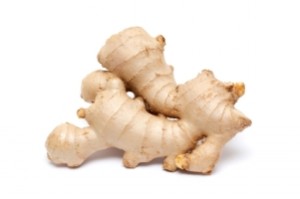 Ginger is a calming spice that has long been touted not only for its ability to add a powerful punch of flavor to both sweet and savory recipes, but for its nutritional and anti-nausea properties. Now, doctors and experts are saying that it may be a powerful weapon to help combat certain types of inflammation that cause pain.
Ginger is a calming spice that has long been touted not only for its ability to add a powerful punch of flavor to both sweet and savory recipes, but for its nutritional and anti-nausea properties. Now, doctors and experts are saying that it may be a powerful weapon to help combat certain types of inflammation that cause pain.
Because ginger contains dozens of phytonutrients called gingerols, it is a powerful agent to help fight inflammation, including the kind that causes arthritis pain. According to the Huffington Post, Japanese researchers recently reported in the Journal of Medicinal Food that red ginger is used in Indonesian traditional medicine as a painkiller for arthritis.
To include more ginger in your diet, you can eat it in a number of ways:
Fresh Ginger: Ginger is a rhizome, which means it has multiple stems like a carrot. When you see fresh ginger in the grocery store it might look unapproachable: gnarled, knobby and inedible. Ginger is actually quite easy to use and once its brown skin has been peeled off with a vegetable peeler or paring knife, it can be sliced or grated and cooked.
Ginger powder: If you aren’t ready to tackle fresh ginger, hit your local spice market or grocery store. Ginger powder can be used in any of your favorite baked goods, soups, stews or spice rubs. Ginger will add a little kick to your food so remember that a little goes along way – unless you like your food on the spicy side.
Ginger tea: While some tea manufacturers sell tea already infused with ginger, you can also add fresh ginger to boiling water and let it steep for 2-3 minutes. Strain the ginger out of the glass (you won’t want to drink the whole pieces of ginger) and add your favorite tea bag.
Fresh grated ginger: In some grocery stores and specialty food markets you’ll find fresh ginger sold in small jars. It tastes exactly like the kind you’d grate yourself but without all of the leg work. Add this to your favorite sauces, stir-fries and even smoothies for unique taste.
Or try these great ginger recipes!
